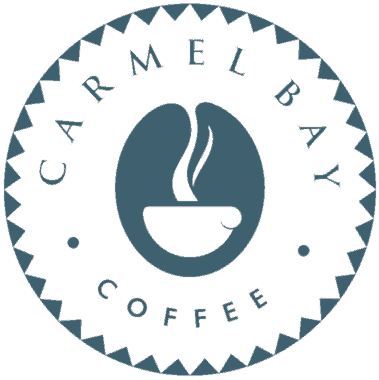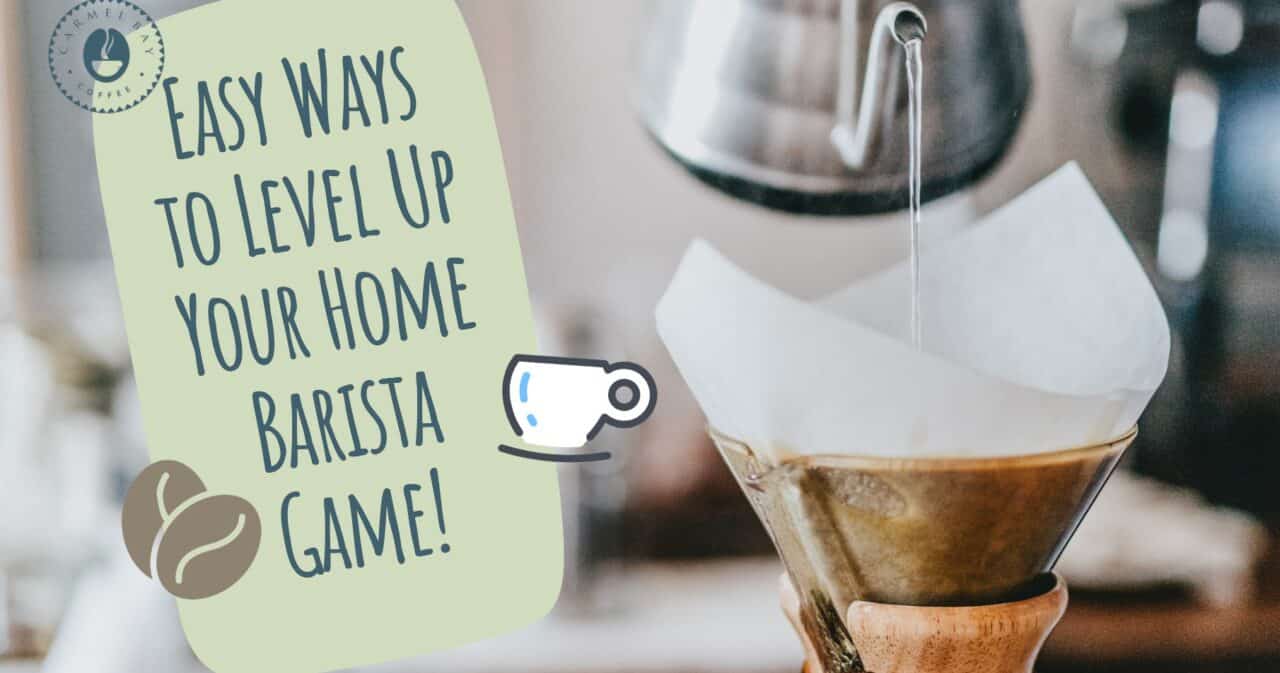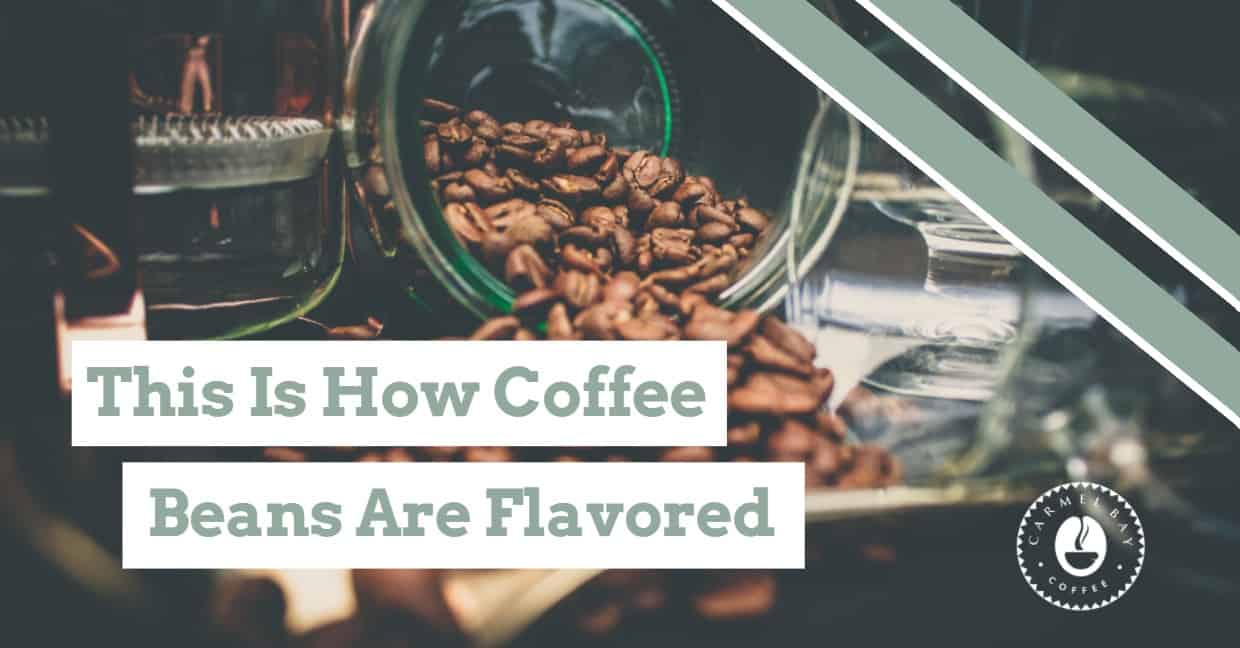Things that don’t blend well together: oil and water, orange juice and toothpaste, water, and computer keyboards.
Luckily, different types of coffee beans do blend well together. If you want to enjoy your coffee even more (yes, it is possible), creating your own coffee blends is a fun way to brew!
Mixing different types of coffee beans into a coffee blend will give you the freedom to experiment and craft a perfect cup of coffee for your taste buds! You can select different bean varieties that enhance one another for a one-of-a-kind coffee experience.
Coffee is a personal and creative experience. So-called experts may dictate which coffee flavors and beans are the best. But, in reality, it’s the person drinking the cup who decides what’s good or bad.
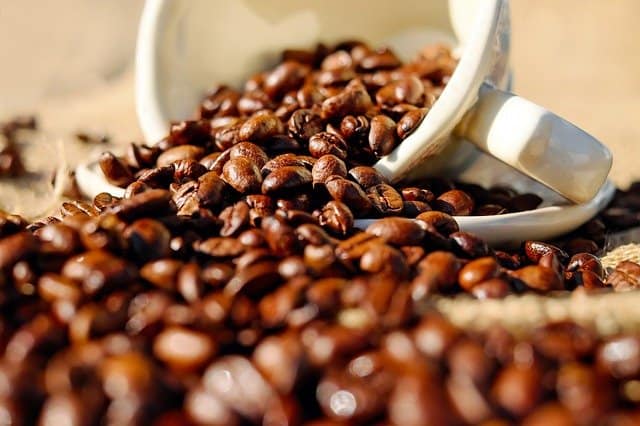
Defining your taste is an essential ingredient in mixing different types of coffee. We can’t predict your favorite flavors, but we can help you with the basics and share the art and science behind blending coffee beans well.
The beauty of coffee is that there is truly something for everyone! Take the time to explore different brew techniques.
Learn about beans from a variety of regions throughout the world. Try new flavors like syrups or kinds of milk. People don’t often realize that you can customize your coffee even further.
We’ll explain both the art and science of mixing coffee beans. We hope that after reading, you will feel confident to concoct unique blends of your own at home!
Since you’re learning how to improve your coffee game, make sure to take a look at my article, Easy Ways to Level Up Your Home Barista Game! I go into detail about all the easy wins to making coffee at home, even if you don’t have a ton of equipment. You can read it here.
What is a Coffee Blend
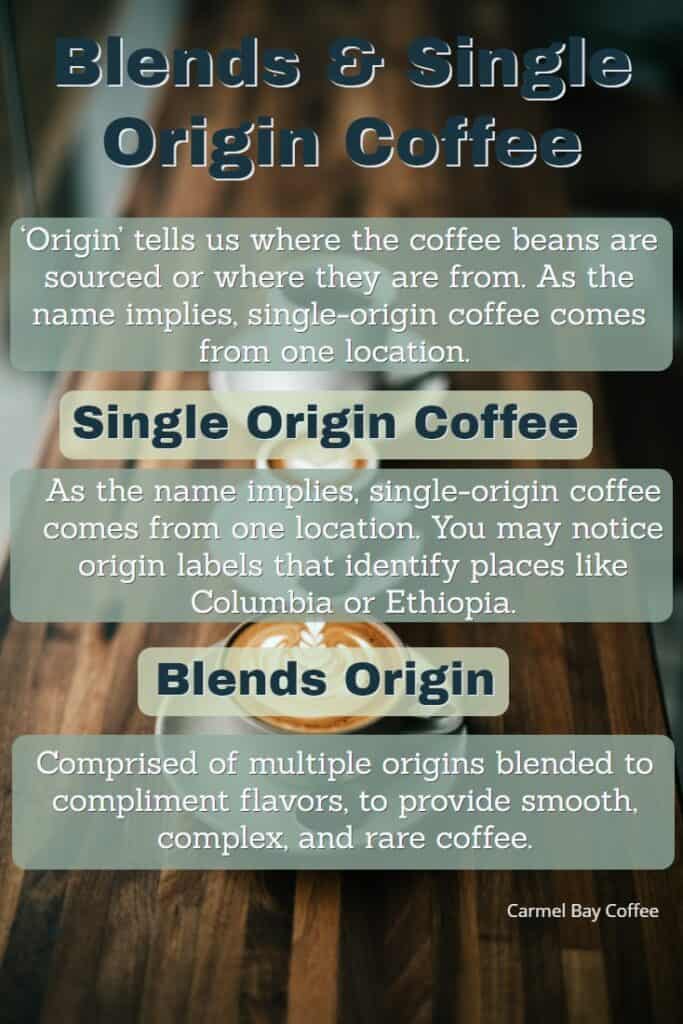
A coffee blend is created when you mix two or more single-origin coffee beans. Blending beans are also called a ‘melange.’ Blooming Bean Coffee tells us that this term comes from the French word ‘meler’ to mix. It is also like the word ‘medley.’
Most blends include two or more coffee varieties. We recommend that you not combine more than five different origins into one blend.
‘Origin’ tells us where the coffee beans are sourced or where they are from. As the name implies, single-origin coffee comes from one location. You may notice origin labels that identify places like Columbia or Ethiopia.
An origin can even be as specific as a particular region or altitude. These qualities influence tasting notes and bean qualities.
If you’re interested in flavoring coffee beans, check out my article, all about how coffee beans are flavored.
Reasons for Blending Coffee
Whether you are a home coffee brewer or a barista at a local coffee shop, there are many reasons to blend coffee beans.
Blending coffee gives you a smoother taste with less acidity than other brewing methods do. It also provides more flavor because you can use more grounds when brewing your cup of joe. Here are some reasons why everyone should be making blended coffee at home!
Create a Consistent Cup of Coffee
The experts at Tea and Coffee explain that blending different kinds of beans can be a great way to balance and enhance flavors. Once you find the right balance, you can create a consistent, tried, and true beverage.

This helps you know what to expect from your coffee each and every time you brew.
Consistency is important. Ever taken a sip of milk, expecting juice? It is a disorienting experience!
If you are expect rich, full-bodied coffee, but get something tart and bright instead, it is unexpected and may taste off. While it might not be as alarming as the milk and juice mix up, it still isn’t what you anticipated!
A consistent cup is essential for large coffee companies. It can help them with customer retention and satisfaction.
Once they perfect their blend, their customers will come to expect that flavor, so it needs to be the same across all shops and each and every cup they serve.
Are you looking to try something new with a coffee subscription? Check out our guide on the best coffee subscription available here.
Increase the Quality of a Cheaper Coffee
Blending coffee is an ideal way to make the most out of cheaper coffee beans while still enjoying your favorite flavors and roasts.
Recently, a friend brought over a bag of inexpensive, generic coffee. She knows I love coffee, and the gesture was sweet! She wanted to enjoy a cup together over some conversation. In the past, I would have suffered through a pot of lackluster java. But I knew better. I had a trick up my sleeve!

Instead of making my kind friend feel bad and not brewing the coffee, she gifted me, I used the blending technique! I mostly brewed the ground beans she brought but added a bit of my favorite (fresh ground) coffee to the mix.
My friend remarked how impressed she was with the coffee!
“It never tastes this good when I brew it at home.”
Blending is my little secret!
Make the Good Stuff Last
While blending can improve the quality of cheaper beans, it can also help make the “good stuff” last longer! The Coffee Brewers share that Arabica beans are high quality and have a smooth, delicious flavor.
These qualities, unfortunately, come at a high cost. They can be expensive and unaffordable to use all the time. This high price tag impacts both coffee shops and at-home coffee brewers.
Luckily, you can savor many of the features of Arabica without using them all at once.
You can do this by blending it with a cheaper coffee option. You’ll still enjoy many of the benefits of Arabica, or your favorite roast, without worrying about spending your entire paycheck on expensive coffee that runs out too quickly.
Create Memorable Flavors
It is wise for coffee shops to take advantage of creating their signature coffee blends. They will commonly design and market a branded flavor.

This ensures their customers come back time repeatedly to experience this specific blend that they likely cannot find anywhere else.
Some shops may create unique seasonal blends, while others may have various blended options throughout the year. Often shops will keep the most popular combinations on rotation as they get feedback from their customers.
How To Create Your Own Coffee Blend
To start, don’t be intimidated by blending coffee beans! If you end up stumbling upon the more technical coffee brewing websites, you may find yourself feeling a bit overwhelmed.
While the information can be interesting, you can come back to it later when you’ve gained some confidence.
When you’re just starting out, have fun with the process, and be playful!
Be willing to explore a little trial and error on your own. Just like playing with the ratio of water to coffee, tinkering with the percentage of different types of beans will allow you to find a blend that is just right for your taste buds.
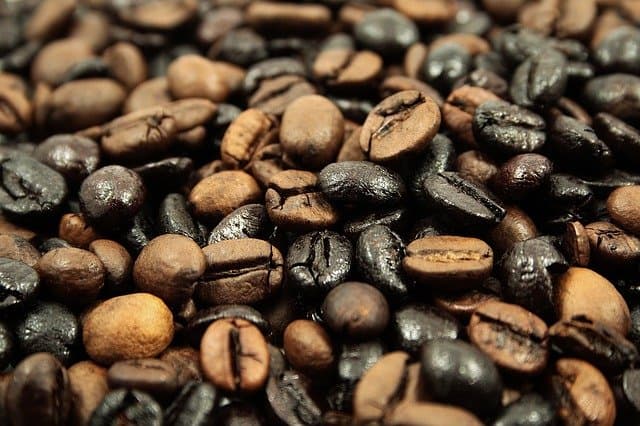
You can absolutely be creative with blending coffee beans, but it’s good to start with the basics to develop a solid foundation.
Choose a bag of your favorite fresh ground coffee to begin. Stick with something you know you already love and enjoy. Start with a ratio of 3 to 1. For example, try 3 oz. of your favorite bean and mix it with 1 oz. of another coffee you’ve had before.
Try it out and see what you like. Ask yourself what you could tweak? Notice if the flavors balance each other or taste a bit “off”. Refine in your next batch!
Perfect Daily Grind suggests using a sweet note as the base of your coffee blend. Beans like Peruvian, Mexican, or Brazilian single-origin beans will do a great job of accomplishing this goal.
Next, you will want to include an element of acidity to add balance, such as a Columbian or Guatemalan origin bean. Lastly, you can include high notes that can be found from a Kenyan or Ethiopian coffee.
We recommend a 40%, 40%, 20% ratio of these three flavor profiles, but you should definitely tweak your own recipe.
Furthermore, you even can try blending beans of the same origins. You may notice that while they are from the same place, they each have their own distinct qualities that surprisingly enhance each other.
How do you know if you’re getting the best quality beans? I have a detailed article on the eight easy ways to tell good quality coffee beans.
Take Notes of Your Coffee Blending Experiments
As you continue to adjust your ratio and bean choices, be sure to take notes to keep track of the changes you make and the end product.
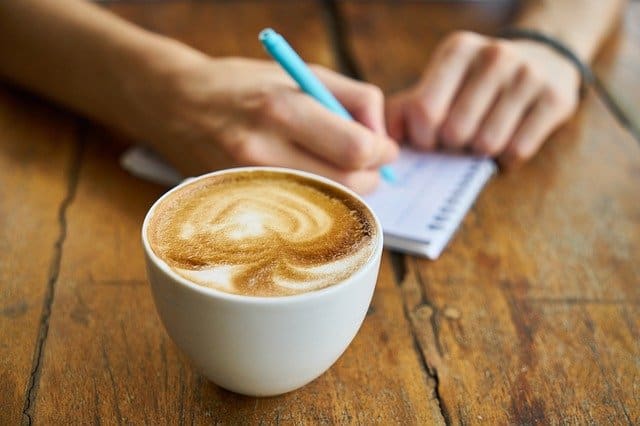
Keep a notebook and pencil handy so that you can document your ratios, coffee brands or origins, and any other details you won’t want to forget!
The goal of blending coffee is always to bring out the best in each coffee, so always start with two coffee profiles that you love on their own before blending.
Mixing Light and Dark Roast Coffee
When mixing coffee, it is essential to know what we mean by light or dark roast. The difference between light, medium, and dark coffee is a direct result of the roasting temperature and time.
Light roast beans are roasted at the lowest temperatures for a short amount of time, while dark roast beans are roasted at high temperatures for an extended period of time.
Most coffee blends are dark roast because, as Nestle explains, blends do well with “bright exotic coffee and a deeper noted bean.” While it is more common for dark roasts to be blended, it doesn’t mean you can’t blend light and dark.
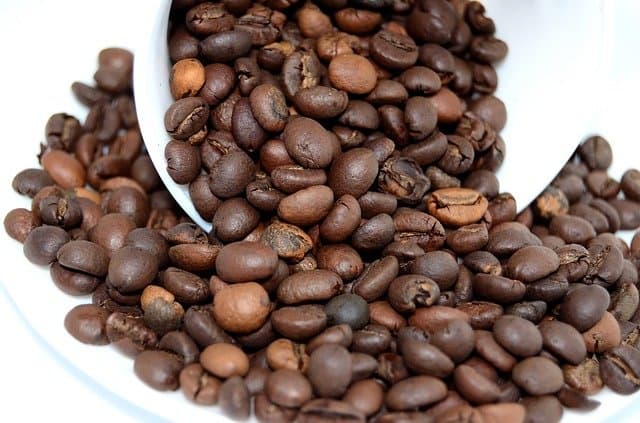
Light and dark roast coffee can work with the right flavors and beans. Consider each coffee’s flavors individually and pay attention to how they may complement and enhance one another to create a new, unique flavor profile.
Black and Tan coffee blends are a classic example of a good match when blending beans. Black and Tans combine a light roast and a dark roast. It may have a more full-body like a dark roast but lower acidity levels like a light roast.
Some Unique Coffee Blends
Mocha Java is one of the first coffee blends in the world. Fresh Ground Roast shares the history of the unique but classic blend.
English traders would make multiple stops in ports on their journeys to Indonesia. Many of them would stop in the port of Java, where they purchased deep, full-bodied coffee. They would visit Mocha in Yemen on the return trip, where they would also buy beans with fruity, light notes.
These flavors were different from the Java-origin coffees. When coffee was enjoyed in Europe, people would often mix the two flavors, and it is now a timeless blend that we find at many coffee shops around the world.
There are tons of other common coffee blends out there, such as Breakfast Blends, Italian Blends, and French Roast Blends. While these are staples, unique coffee blends are being created all the time.
It is always fun to look at the options coffee shops offer to purchase or for inspiration. You may stumble upon a Costa Rican, Columbian Holiday Blend, or a House Blend that captures that particular shop’s style.
To Blend Coffee or Not to Blend Coffee
Blending coffee allows home brewers and baristas alike a ton of creativity. The art of mixing different coffees into a blend can take some time, organization, and patience.
While it can take some time, blending is an excellent technique to uncover new coffee flavors. It can help you expand and enrich your coffee drinking experience.
Look for inspiration from coffee shops you love. Trust that your favorite single-origin flavors will help you discover a balanced, unique blend that you’ll love to create time and time again!
